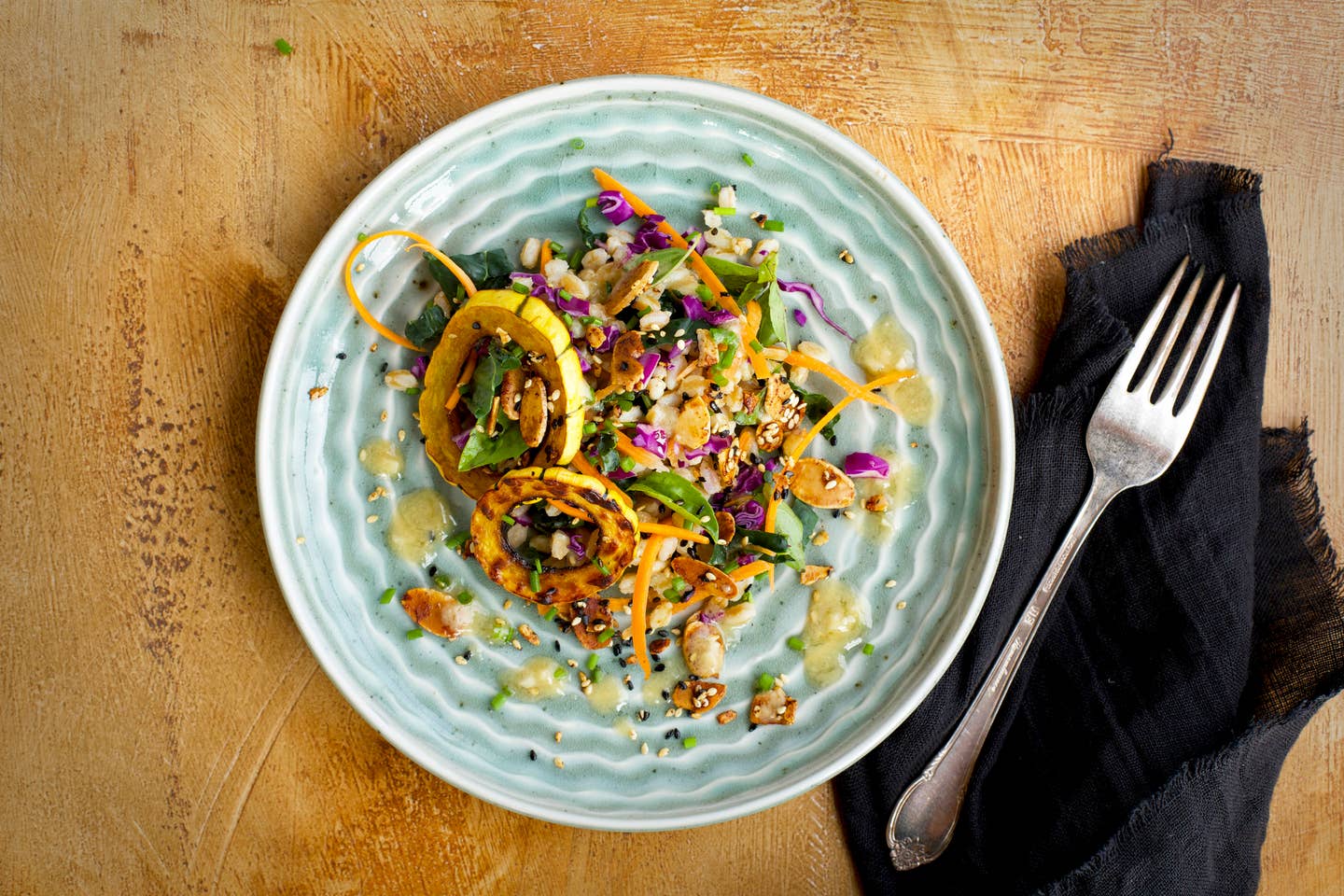
This Whole Grain Superfood Packs More Protein than Quinoa
If you’re looking to add more whole grains to your plant-based diet, it’s time to make friends with farro. This ancient type of wheat has 7 grams of protein per (cooked) half cup—more than an egg—and boasts one more muscle-building gram than quinoa’s 6 grams per cup.
There are two types of farro: Einkorn, German for “one kernel,” or farro piccolo (Triticum monococcum), which means “small farro." There is also Emmer, its Hebrew name, also known as “farro medio,” ((Triticum dicoccum), which was first grown 17,000 years ago by ancient Babylonians.
Mayo Clinic dietician, Anya Guy, cites a few of farro’s praises: “Farro is a great source of fiber, iron, protein and magnesium. With all of those nutrients in this little grain, it can provide a lot of health benefits for your diabetes or for heart health or for brain health."
Ancient History
Farro can be traced back thousands of years to ancient Egypt, which is why it sometimes goes by the name of Pharoah’s wheat. It was also an ancient Roman staple and, according to the Whole Grains Council, it may have originated in the Central Mediterranean.
Eat Farro for Fiber and Nutrients
With about 6 grams of fiber per (uncooked) quarter cup, farro has got four times as much of the nutrient as brown rice. Farro is a complex carb so it breaks down slowly, which helps keep your blood sugar at a steady level. Complex carbs like those in whole grains also contain cyanogenic glucosides, which improve cholesterol levels and stimulate the immune system. For more fiber in your plant-based diet read our article breaking down all the benefits fiber has to offer the body.
Farro contains niacin, (vitamin B3), which your body needs to metabolize protein, carbohydrates and fats. It’s also a good source of minerals like magnesium, iron and zinc. Researchers from Tufts University link higher magnesium levels in diets to reduced coronary-artery calcification, and lower risk of progression from prediabetes to type 2 diabetes. Studies show that as you age, more magnesium may support your mobility. Farro also contains more phytonutrients than modern wheat varieties, so it's a great grain to reach for in lieu of others.
In addition to 7 grams of protein and 3 grams of fiber, here’s what you get from one quarter-cup of uncooked farro according to the USDA Nutrient Database:
- 170 calories
- 1g fat
- 8g saturated fat
- 32g carbohydrates
- 1g sugar
- 20mg (2% DV) calcium
Make sure to buy whole-grain farro. Farro that is hulled or pearled is not a whole grain since the brain has been removed. Remember, farro is a form of wheat and therefore does contain gluten, so it's not an option for those with gluten intolerances.
Fast and Forgiving
Farro has a chewy, nutty flavor and tends to hold its texture without getting soggy. It makes a satisfying warm breakfast cereal, and it makes a delicious addition to summer salads, as well as soups. You can also feast on 'farrotto' by replacing the arborio rice used in risotto. Farro cooks twice as fast as brown rice and is far less finicky to prepare. Basically, the grain is more nutrient-dense than brown rice, has a delicious, earthy flavor, and is super simple to cook, which is why you should reach for it to cook your next recipe.
More From The Beet






